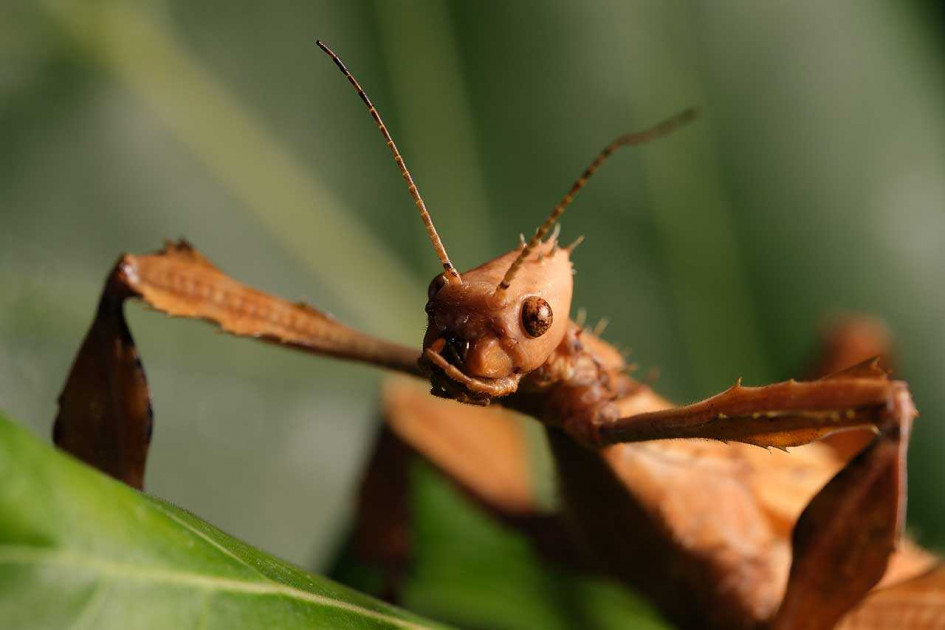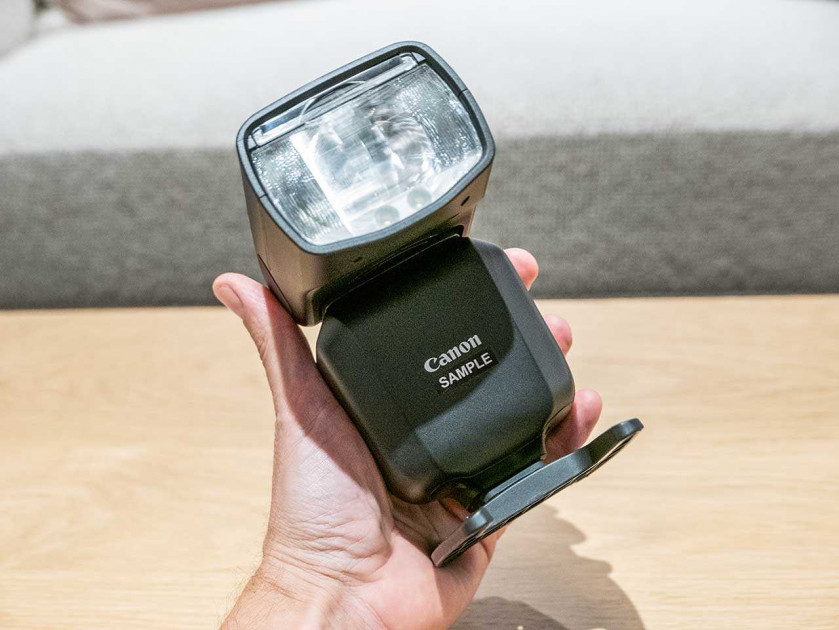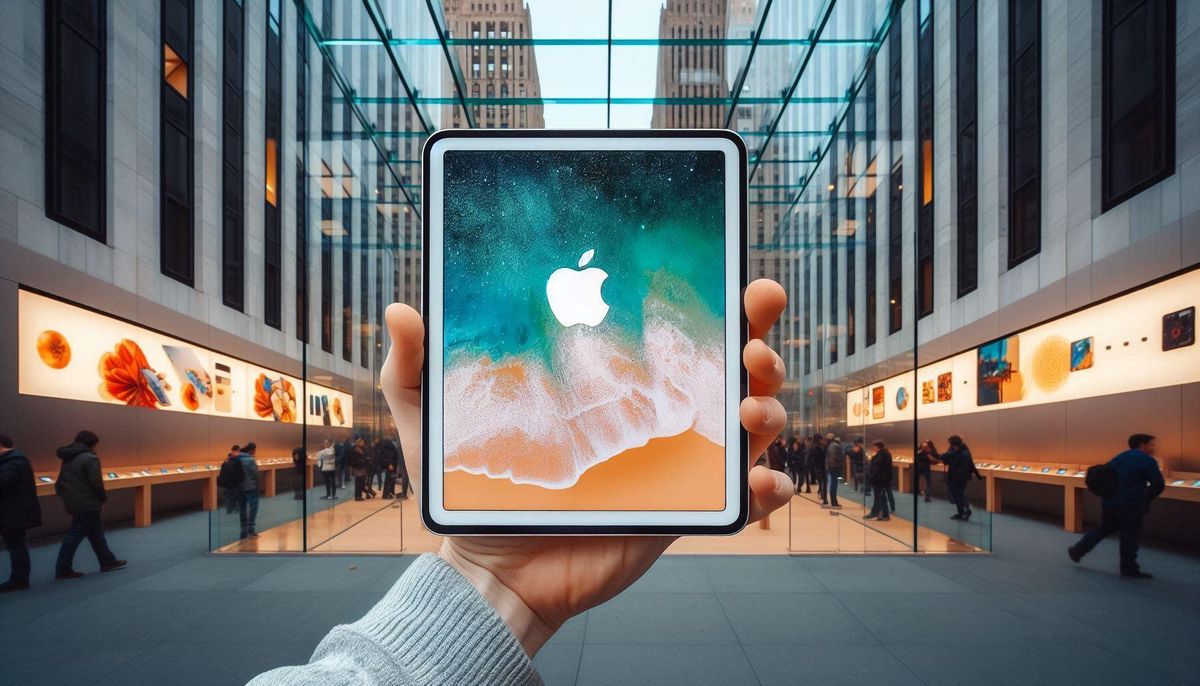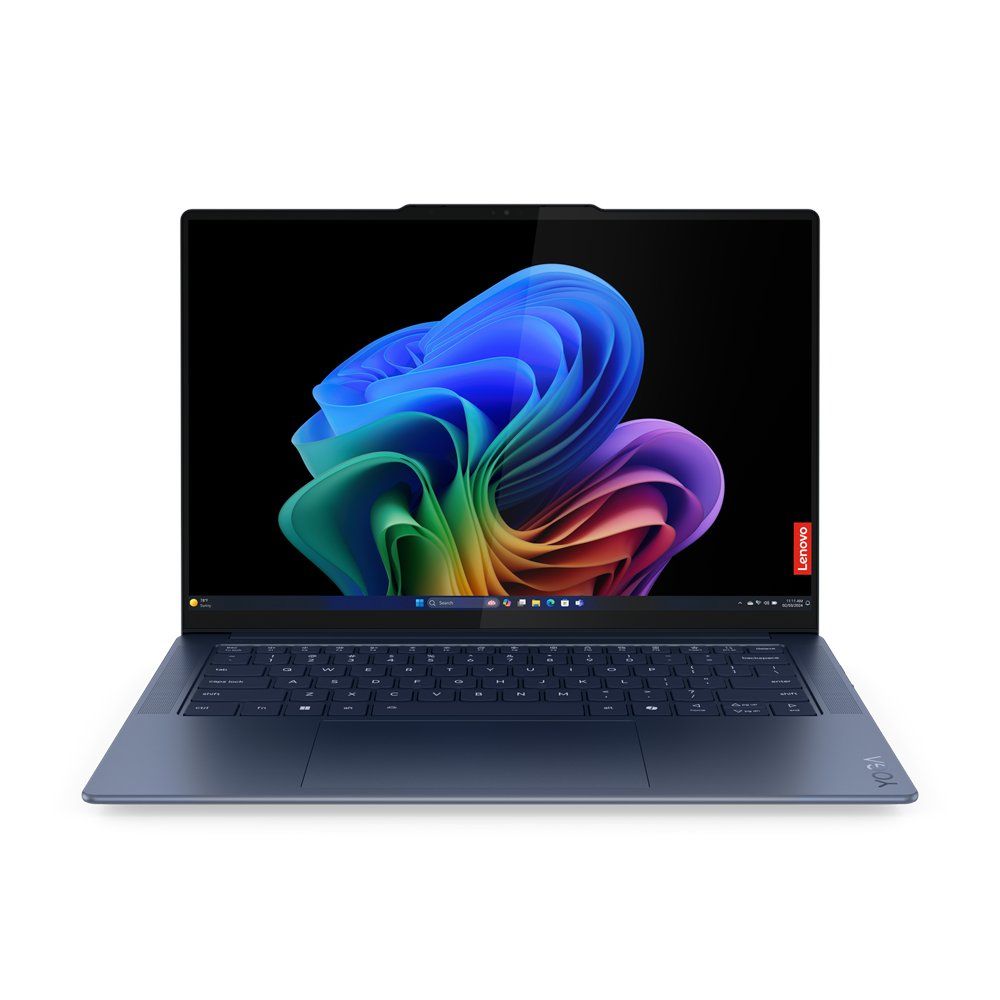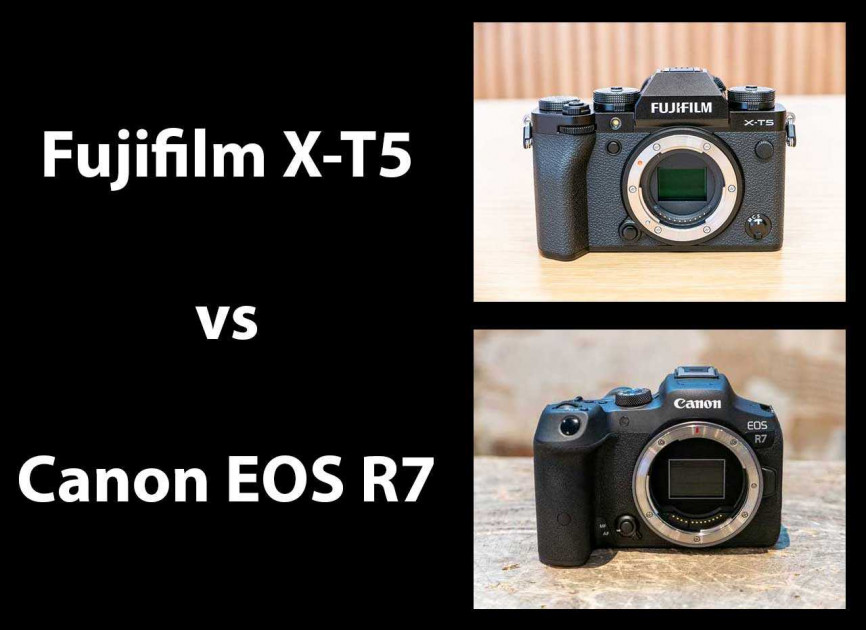

Although they share similar key specifications and features, the Fujifilm X-T5 and the Canon EOS R7 that were both released in 2022 actually differ a lot when it comes to their appearance and control layout, with the latter also being priced slightly lower than the former.
So we’re bringing you this in-depth Fujifilm X-T5 vs Canon EOS R7 head-to-head comparison to help you choose between these two mirrorless cameras.
You can also read our detailed Canon EOS R7 review to find out exactly what we think of that camera.
Sensor
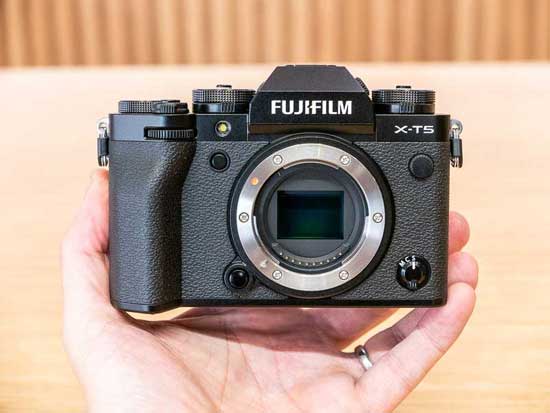
The Fujifilm X-T5 uses a brand new 40.2 megapixel X-Trans CMOS 5 HR sensor.
The Canon EOS R7 has a lower resolution 32.5 megapixel APS-C CMOS sensor.
Both models offer the joint highest resolution currently found in a Canon or Fujifilm cropped sensor mirrorless camera.
Note that the X-T5 has a backside-illuminated (BSI) sensor whereas the R7 doesn’t, so the low-light performance may be similar between the two cameras despite the former offering more megapixels from the same sized sensor.
Multi-shot Mode
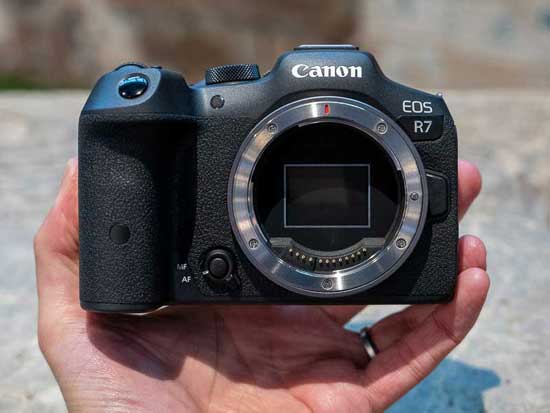
The X-T5 features the special Pixel Shift Multi-Shot mode, which combines 20 separate images to create a single 160 megapixel RAW file for the ultimate quality when detail really matters.
The Canon EOS R7 does not offer this feature at all.
ISO Speed

The native sensitivity range of the Canon EOS R7 is ISO 100-32000, which can be expanded up to to ISO 51,200.
The Fujifilm X-T5 has a smaller native sensitivity range of ISO 125-12,800, which can be expanded down to ISO 64 and up to ISO 51,200.
Video
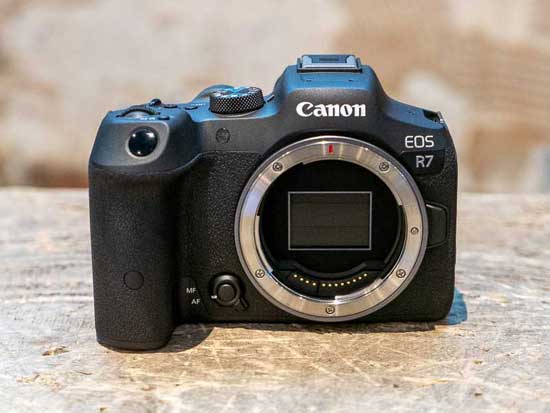
The XT5 offers a highest video quality rate of 6.2K/30p with a modest 1.23x crop recorded in 4:2:2 10-bit internally.
It also supports up to DCI 4K/60p recording with no crop and can shoot 1080/240p slow-motion footage.
The EOS R7 can’t record in 6K, but does offer 4K/60p quality with no crop and 1080p footage at frame rates up to 120fps.
Autofocus
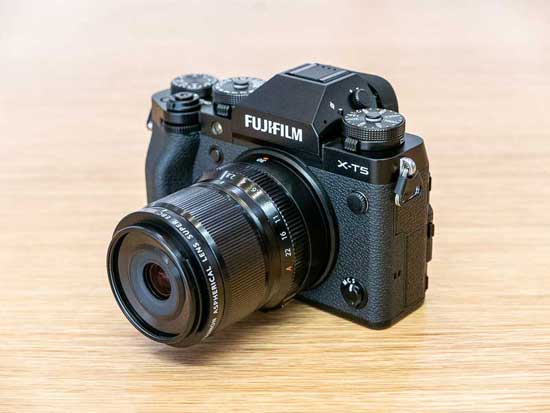
Both cameras offer excellent auto-focus systems.
The Canon R7 features exactly the next generation Dual Pixel CMOS AF II focusing system as used by the flagship R3 and R5 full-frame cameras.
It has 651 automatic focus points and 5,915 manually selectable AF points with 100% frame coverage in Auto selection mode and 90% vertical and 100% horizontal in manual selection.
The R7 can focus in light levels as low as -5EV (when used with an F1.2 lens) or with maximum apertures as small as f/22, which enables autofocus even when using ultra telephoto lenses with teleconverters.
The new X-T5 has exactly the same hybrid autofocus system with phase detection and and contrast detections points as the more expensive X-H2.
In the Single point AF mode there are up to 425 selectable AF points arranged in a 25×17 grid. Alternatively, the camera can be set to 117 points in a 13×9 grid, and the size of the points can also be varied.
The X-T5 can focus down to an incredible -7EV in low-light, surpassing the EOS R7.
The EOS R7 offers exactly the same deep-learning artificial intelligence based automatic face, eye and animal (cats, dogs and birds) AF tracking modes as the R3, R5 and R6 models.
The EOS R3 also has the ability to track vehicles, including cars and motorbikes. What’s more, if the driver is wearing a helmet, the AF system will lock on to that, ensuring that the most important subject is in focus.
The X-T5 can automatically detect animals, birds, cars, bikes, planes and trains thanks to the X-Processor 5’s AI deep learning capabilities.
Burst Shooting
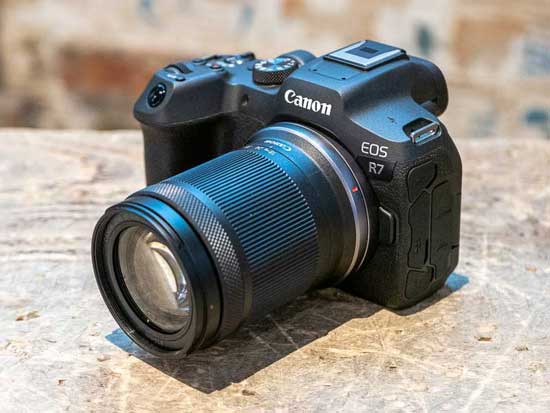
The R7 can shoot at a blistering 30fps with no crop when taking advantage of the silent electronic shutter.
The XT5 can only shoot at up to 20fps when using the electronic shutter, and that’s with a 1.29x crop applied.
Both models offer the same 15fps continuous shooting speed when using the mechanical shutter.
There is one important difference between them, and that’s the size of the internal buffer.
The R7’s buffer allows bursts of up to 224 JPEG or 51 RAW images when using the mechanical shutter or 126 JPEG or 42 RAW images when using the electronic shutter.
The X-T5 can only manage a relatively meager 119+ JPEGs or 19 RAW files before the continuous shooting rate starts to slow down.
Shutter Speeds
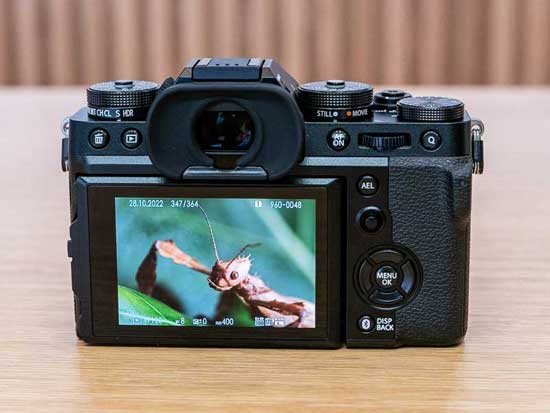
The new X-T5’s fastest shutter speed for the electronic shutter is an impressive 1/180,000sec.
The R7’s top shutter speed is a still impressive 1/16,000sec when using the electronic shutter.
Body and Design
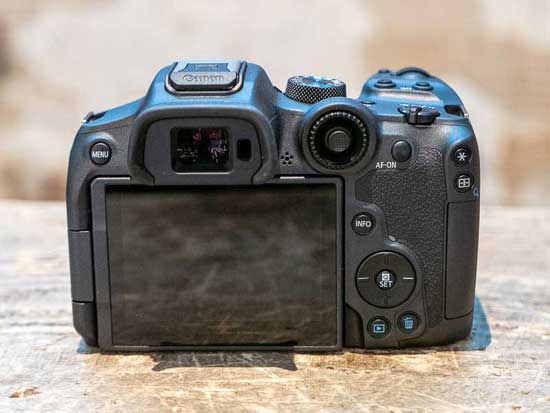
These two cameras take a markedly different approach in terms of their design and control layout.
The X-T5 retains all of the traditional dials and controls that Fuji users have come to know and love, including the classic ISO, Shutter Speed and Exposure Compensation dials on top of the camera.
The XT5 weighs 476g body-only or 557g with a battery fitted.
The EOS R7’s design is more “DSLR-like”, with fewer manual controls than the XT5.
The R7 is slightly heavier, weighing in at 530g body-only or 612g with both a battery and memory card fitted.
IBIS
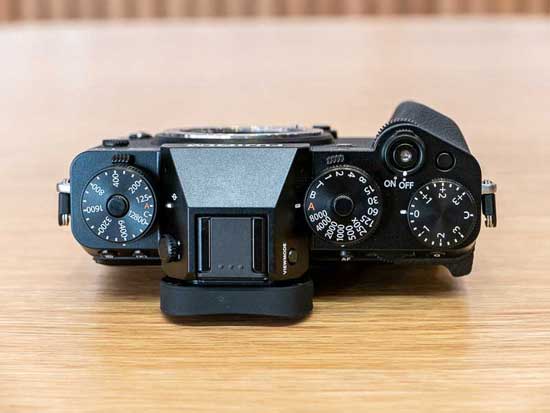
The XT5 is the sixth Fujifilm camera to feature 5-axis in-body image stabilisation (IBIS), providing up to a maximum of 7-stops, half a stop better than its predecessor and the joint-best of any current Fujifilm camera with the X-H2 and X-H2S.
The R7 goes one step better by offering up to 8-stops of image stabilisation available via a combination of the camera’s in-body Image Stabiliser which works in tandem with the attached lens’ own stabilisation system.
Viewfinder
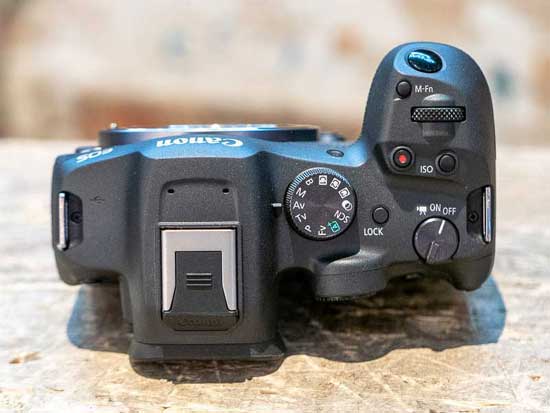
The Canon R7 has an electronic viewfinder with 2.36M-dot resolution, magnification of 1.15x and 120fps refresh rate.
The X-T5 has a higher resolution 3.68M-dot electronic viewfinder, but a slower 100fps refresh rate and lower 0.80x magnification.
LCD Screen
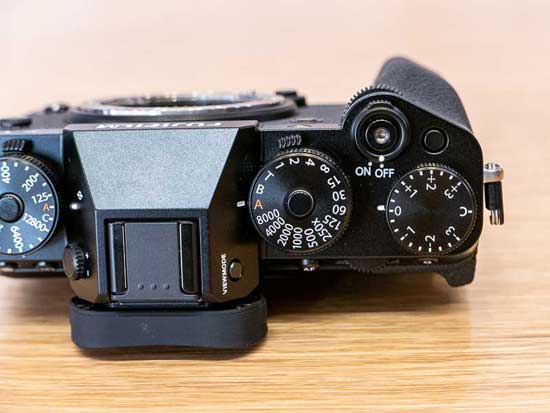
One of the biggest differences between these two cameras is the action of the LCD screen.
Fujifilm have used a 3-way tilting LCD on the new X-T5 with a resolution of 1.84M-dots, making it the highest-res screen of any current Fujifilm APS-C camera.
The EOS R7 has a 3-inch 1,620K-dot LCD monitor with a vari-angle design that is arguably more versatile and better suited to video use.
Memory Cards

Both cameras have dual memory card slots that support UHS-II SD cards.
Battery Life
The EOS R7 can record 500 shots when using the EVF and 770 when using the LCD screen before the battery runs out.
Fujifilm are claiming that the X-T5 offers 740 shot battery life in economy mode.
Both cameras can also be powered and charged via a USB-C connection, which is useful if you’re out and about and have a compatible power-bank to plug the camera into.
Vertical Battery Grip
Somewhat controversially, neither of these cameras supports a vertical battery grip (there are no contacts on the bottom of the camera body).
Lenses
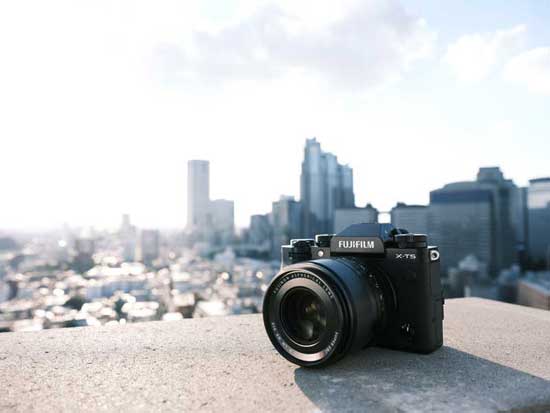
Our main bugbear with the R7 is the lack of lens support. The EOS RF-S mount is admittedly still very much in its infancy, but it would have been nice to see Canon offering something more interesting than two slow zoom lenses from day one, even if they are very affordable.
You can use Canon’s adapter to mount their vast range of full-frame EF DSLR and RF mirrorless lenses on the R7, but that perhaps rather negates the point of buying a smaller sensor, physically smaller camera.
In direct contrast, there are over 40 high quality Fujifilm APS-C lenses that more than cover virtually every focal length that you can think of, and that’s not including all of the third-party alternatives that are also available. Fujifilm clearly has a massive lead in the lens department.
Price
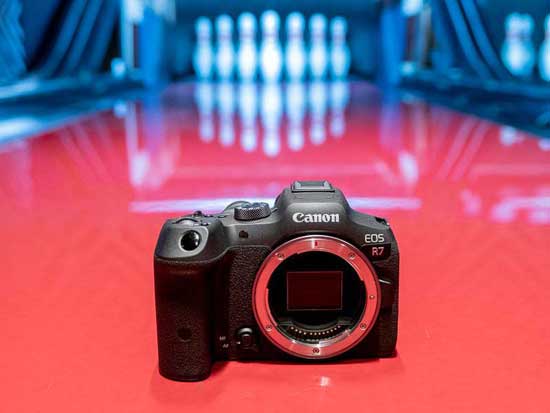
The new Fujifilm X-T5 is priced at £1699 / $1799 body-only in the UK and USA respectively.
The Canon EOS R7 is priced at £1349 / $1499 body-only, making it substantially cheaper than the XT5.
Conclusion
If it wasn’t for the vast difference in lens support, it would be a very close-run contest between these two cameras. While the X-T5 offers more megapixels, 160mp pixel-shift mode and slightly more capable video recording, the R7 offers faster burst shooting with a bigger buffer, one-stop better IBIS system and in our view a more versatile LCD screen, all at a lower price.
So what do you think? Would you choose the new X-T5 or the Canon EOS R7? Leave a comment below!
